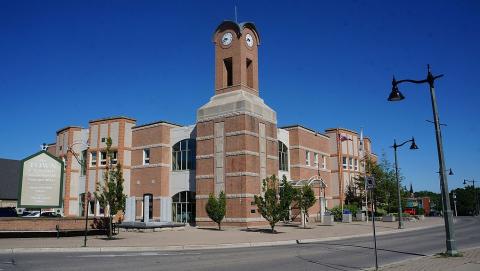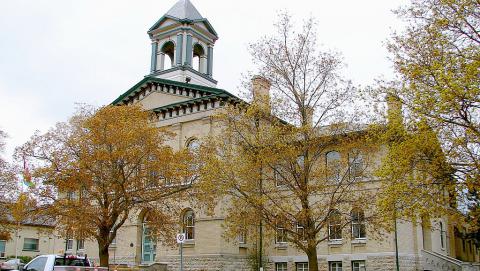Election Summary
417 municipalities were to hold elections in 2022. This figure includes three upper-tier municipalities that hold elections for regional chairs at the lower tier: Halton Region, Waterloo Region, and Durham Region.
Approximately 6,325 candidates competed for the 2,842 elected positions. 553 positions were uncontested and were therefore acclaimed.
Women [1] comprised 32% of candidates – and 32.3% of elected or acclaimed candidates, which is higher than 29.4% in 2018. Incumbents comprised 33.8% of candidates and captured 57.5% of seats available. In the 2018 election, incumbents comprised 33.9% of candidates and captured 58.7% of seats available.
Voter Turnout
Average voter turnout was 32.9% (based on 385 municipalities that conducted direct elections and provided voter turnout information). In 2018 it was 38.30%.
Women
1,939 of the 6,325 candidates in this election were women. That’s 31% of the total pool of candidates – and a moderate increase over the 27% in 2018, and 24% in the 2014 election.
Women Acclaimed to Office
Of the 553 acclamations, 165 were female. That’s 30% of acclamations, and slightly lower than the percentage of female candidates overall.
Women Elected to Office
Of the 2,283 candidates elected to office, 750 were women. That’s 33% of women running in contested elections. In contrast, 37% of men running in contested elections were successful.
Total number of females elected as:
- Head of council = 110 (92 in 2018)
- Councillors: 942 (includes those that sit on both upper and lower tier)
All Female Councils
Township of Algonquin Highlands elected a council comprised entirely of women.
Success Rates
A candidate’s electoral success depends on the magnitude of her competition, the recognition of her name among the electorate, the size of her war chest, and other factors.[2] Our data cannot account for all of these influences; information below should be interpreted with caution.
Women [1] were slightly more successful than men in Ontario’s 2022 municipal elections (Table 1). Of 1,939 female candidates, 47.2% were successful. In contrast, 43.8% of the 4,385 men running were successful. Compared to 2018, where 46.4% of women running were successful, and 41.4% of the men running won a seat.
Incumbents enjoyed a substantial advantage (Table 2). Of 1,791 incumbents running for the same office, 80.1% were successful. This is higher than the success rate for incumbents running for the same office from 2018, which was 76.5%. Of 350 incumbents running for a different office, 59.1% were successful, which is also higher than 57.5% in 2018. In contrast, 28.5% of the 4,184 candidates running for the first time were successful. New candidates elected was around 26.7% in 2018.
Women and men [1] were equally likely to be incumbents. Elected female incumbents (same and new office) at 54.5% were lower than 57.2% for the elected male incumbents. However, 30.9% of females running as new candidates were elected, whereas only 23.4% of new male candidate were elected. (Table 3).
Turnover Rates
Municipalities experienced an average turnover of 42.0%, which is higher than 41.5% in 2018. New candidates captured 42.0% of seats available. Turnover ranged from 0% in 23 municipalities to 100% in 10 municipalities.
Tables
Table 1: Electoral results by gender
|
|
Female |
Female |
Male |
Male |
Total |
|
|
Number |
Percentage |
Number |
Percentage |
Number |
|
Acclaimed |
165 |
8.5% |
388 |
8.8% |
553 |
|
Elected |
750 |
38.7% |
1,533 |
35.0% |
2,283 |
|
Unsuccessful |
1024 |
53.8% |
2,464 |
56.2% |
3,489 |
|
Total |
1,939 |
100.0% |
4,385 |
100% |
6,325 |
|
Table 1: Electoral results by gender |
|||||
Table 2: Electoral results by incumbency
|
|
Incumbent (Same Office) |
Incumbent (New Office) |
New Candidate |
Total |
|||||||||||||||||||||||||||||||||||||||||||||||||||||||||||||||||||||||||||||||||||||||||||||
|
|
# |
% |
# |
% |
# |
% |
# |
||||||||||||||||||||||||||||||||||||||||||||||||||||||||||||||||||||||||||||||||||||||||||
|
Acclaimed |
388 |
21.7% |
46 |
13.1% |
119 |
2.8% |
553 |
||||||||||||||||||||||||||||||||||||||||||||||||||||||||||||||||||||||||||||||||||||||||||
|
Elected |
1046 |
58.4% |
161 |
46.0% |
1076 |
25.7% |
2,283 |
||||||||||||||||||||||||||||||||||||||||||||||||||||||||||||||||||||||||||||||||||||||||||
|
Unsuccessful |
357 |
19.9% |
143 |
40.9% |
2989 |
71.4% |
3,489 |
||||||||||||||||||||||||||||||||||||||||||||||||||||||||||||||||||||||||||||||||||||||||||
|
Total |
1,791 |
100.0% |
350 |
100.0% |
4,184 |
100.0% |
6,325 |
||||||||||||||||||||||||||||||||||||||||||||||||||||||||||||||||||||||||||||||||||||||||||
|
Table 2: Electoral results by incumbency Table 3: Elected candidates by incumbency and gender (excl. acclaimed)
|
|||||||||||||||||||||||||||||||||||||||||||||||||||||||||||||||||||||||||||||||||||||||||||||||||
Table 3: Elected candidates by incumbency and gender. Percentages are expressed in terms of the number of candidates of the specified gender and incumbency that competed in a contested election (e.g., 57.3% of female incumbents running for the same office were elected, not including acclaimed candidates).
[1] Disclaimer. The Association of Municipalities of Ontario (AMO) has generated these election statistics as a public service. AMO cannot guarantee and assumes no legal liability or responsibility for the accuracy, currency and completeness of the information posted. As of publishing this information, the post-election data is not final.
[2] Kushner, Siegal and Stanwick described relevant factors in Ontario’s municipal elections back in 1997. See their article online or in the Canadian Journal of Political Science, 30 (3): 539-553.



